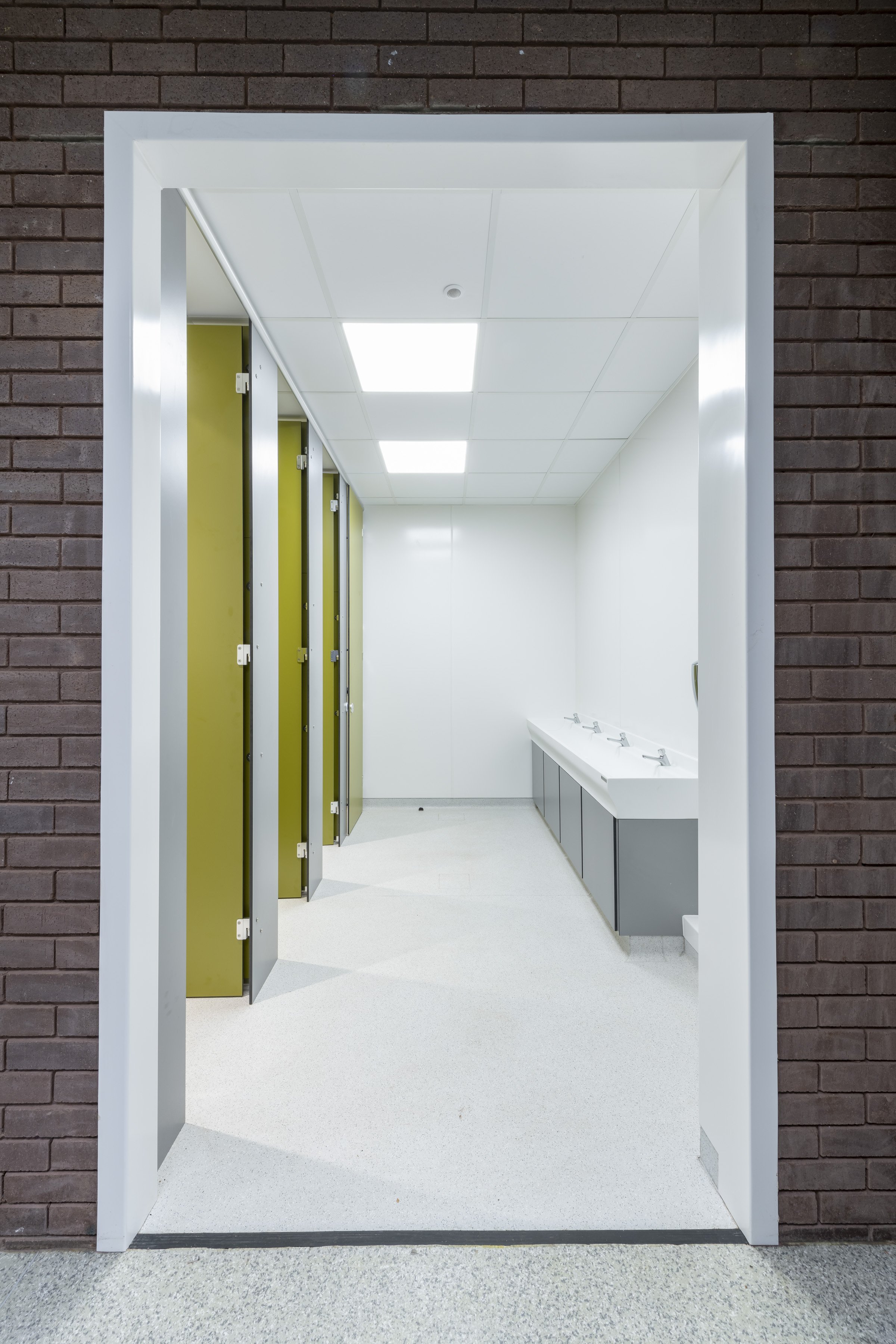(Guide) 5 considerations when planning school toilets refurbishments
With so many rules and regulations, along with child safety, health and wellbeing being top priorities in schools, naturally, there are lots of things to consider when planning new school toilets.
Perhaps you’re a headteacher, facilities manager, business or finance manager and you’re tasked with procuring new washrooms.
You may be wondering where to start, what to ask, what to research and so on, so we took a moment to sit down with our school washroom expert, Anthony Dunham to give you the lowdown on everything you need to know.
-
What should teachers consider when planning new school toilets?
2. When’s the best time of year to refurbish the school toilets?
3. How often are school toilet facilities refurbished?
4. What does the Office for Standards in Education (Ofsted) look for during their school toilet inspections?
5. Are there new trends appearing in washroom design?
Q1. What should teachers consider when planning new school toilets?
“As you can imagine, there are lots to consider at the planning stage from safety, style, durability, hygiene, design, cost, timings and so on.
Most schools will opt for a company that can manage the process from concept to completion as it’s just much more convenient and you have fewer moving parts.
The service we provide at Focus Washrooms spans from the design, manufacture, project management, and final installation of complete washroom solutions for schools.
This end to end service that we offer makes the staff and pupils’ lives easier when a school washroom company provides what we refer to as a turnkey service.
In simple terms, schools hand over the washrooms to our team and we agree on a guaranteed completion date where we hand them back in fantastic new condition, ready to use.“
Q2. When’s the best time of year to refurbish the school toilets?
“We get asked this a lot because many schools believe that toilet refurbishment has to be done out of term time in school holidays. This actually isn’t the case and our team is working in schools and other education settings across the UK all year round installing new washroom solutions.
Our experienced team have a wealth of experience and because we manufacture our own toilet cubicles, wall cladding, fixture and fittings, and so on, we can bring materials on to school premises as and when needed.
What this means is that our team doesn’t take up much space and we can work safely and discreetly even during term time. We can support you in coming up with solutions for alternative washrooms to minimise any disruption whilst we carry out work.
Depending on the size and scope of the project, typically, Focus Washroom refurbishment projects will take between 2 – 4 weeks. It’s worth noting that for peace of mind and school safety, all our team are DBS enhanced checked.”
Q3. How often are school toilet facilities refurbished?
“From our experience, school toilets should be refurbished every 10-15 years, although, of course, this will need to be done more often if the schools’ needs change.
Washrooms will last a good 15 years in schools if they’re taken good care of, as we use only the best quality
products that are built to last, here in the UK at our manufacturing site.
We understand that school washrooms must be robust, durable, hygienic, safe and long-lasting so everything is built with these critical factors in mind.”
Q4. What does Ofsted look for during their school toilet inspections?
“Ofsted’s main concerns tend to be around the safety and well-being of children so they’ll look out for anything damaged or broken in school toilets. They’ll also want to see that school toilet areas can be supervised effectively without compromising privacy.
The Advice on Standards for School Premises dated March 2015 is particularly helpful. This guidance sets out the various requirements for the number of school toilets, basins, showers etc. per number of pupils and this is split into various age categories.
It also sets out clear guidance for unisex facilities and changing and shower provisions for years 7 and upwards if there is physical education. Adequate ventilation and lighting must be installed as well and you’ll also find regulations regarding toilet facilities for staff, visitors and persons with disabilities.
It’s a good idea to read through this guidance paying special attention to pages 5 and 6 but of course, our team is here to help so feel free to just get in touch with us. “
Q5. Are there new trends appearing in washroom design?
“One thing we’re seeing a lot more of is requests for unisex toilets in schools. There are special considerations with unisex toilets, the main consideration being privacy and safety. As it’s such an important and sometimes sensitive topic.” We’ve covered all the things you need to know and consider in a guide here >>
“Another request we are hearing, particularly in senior schools, is for ‘bombproof’, or more commonly called anti vandal washrooms. There are several strategies and features that can be included in a washroom to make it more durable and less prone to antisocial behaviour – from the type of cubicles you have to the taps you choose.” Here’s a video where we go through how taps and troughs can reduce vandalism >>
“In all washrooms, there is a balance to be struck also between student privacy and the occasional need for staff to informally monitor washrooms. Some schools are choosing to made adjustments washroom entrances in order to achieve this” Anthony runs through it here in this video >>
“Not a trend as such, but since covid times, we’re seeing an increased focus on hygiene in school toilets. I’d say around 80% of our customers are choosing hygienic wall cladding for their wall surfaces and there’s an increased focus on handwashing. We’re also finding that more and more schools are opting for centralised wash troughs and automatic sensors to flush toilets and dispense water and soap. “
If you are planning to refurbish your school washrooms, our team is here to help so feel free to just get in touch with us. We can help you on all aspects of the process from budgeting, to choosing, until project completion.







